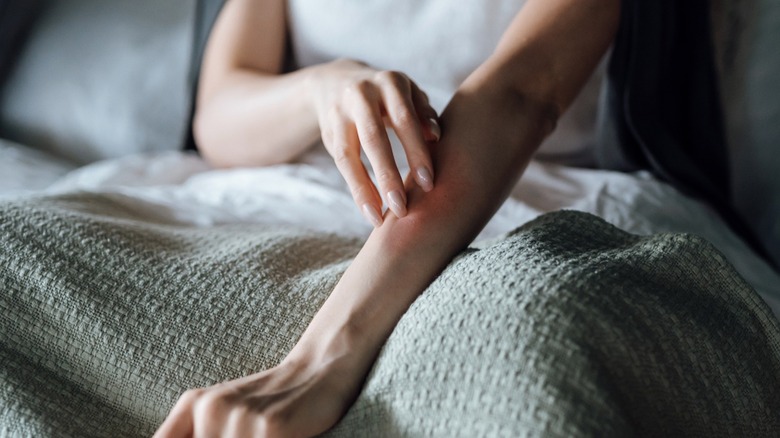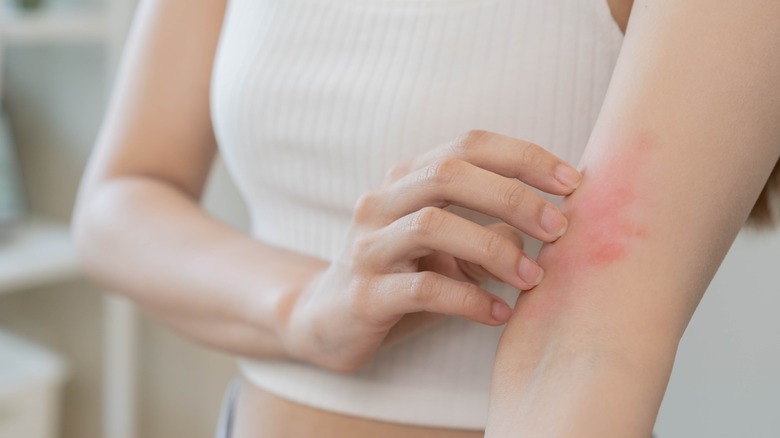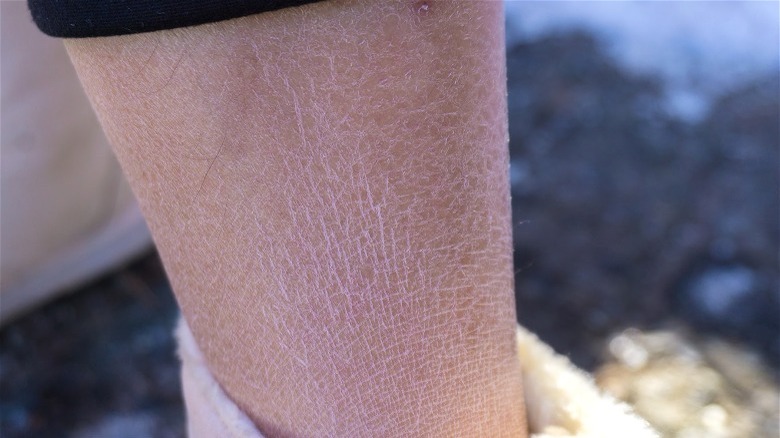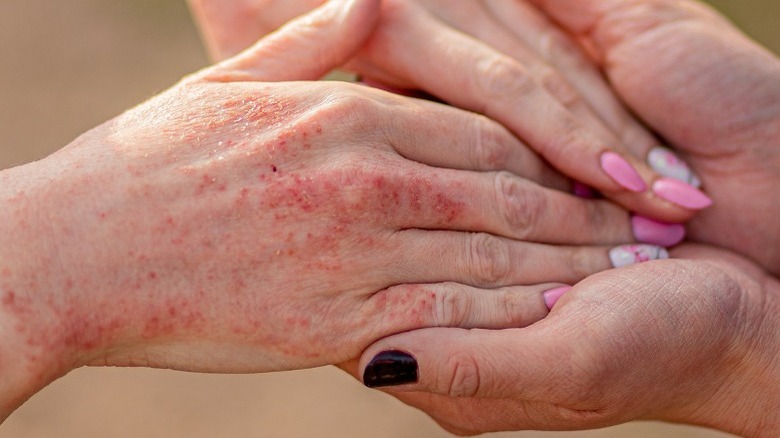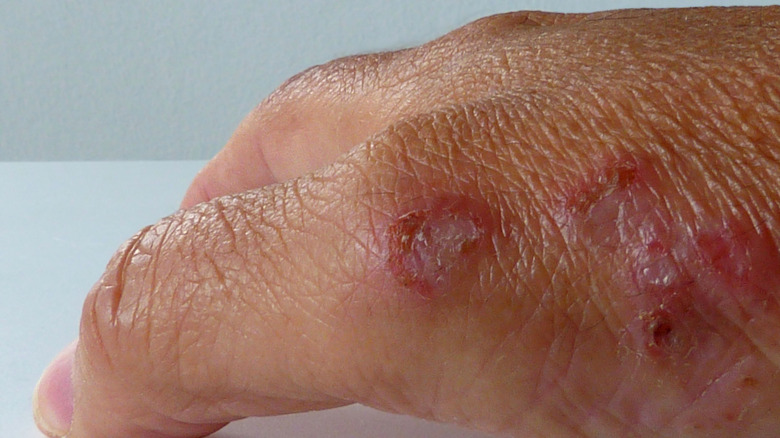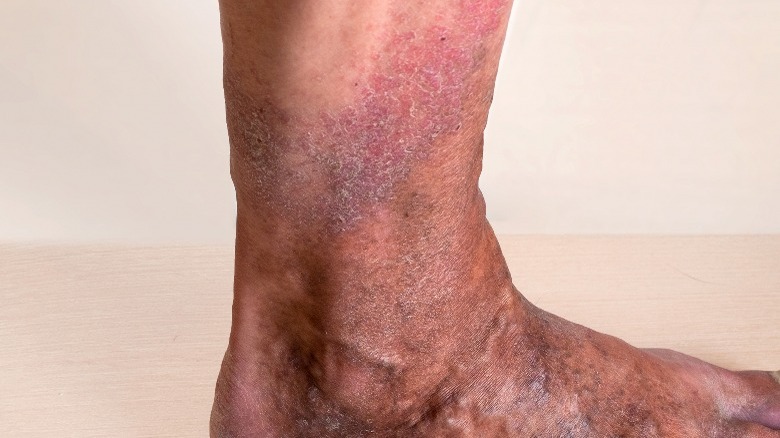Identifying Different Types Of Eczema And How To Treat Them
With the skin being the largest human organ, it's no wonder that skin conditions are one of the most common health problems Americans deal with. According to the American Academy of Dermatology Association (AADA), one in every four Americans has some sort of skin condition.
Acne is by far the most common, but dermatitis and eczema follow closely. While dermatitis is a term that refers to the inflammation of the skin and is different from eczema, the two are intertwined. As a result of their often severe symptoms, topic and contact dermatitis are considered types of eczema. The National Eczema Association reports that one in every 10 Americans has some sort of eczema condition, with most of this number being children.
Most types of eczema are chronic skin conditions for which the cause is often unclear, which severely limits treatment. Usually, the affected individual can only take steps to relieve uncomfortable symptoms (such as dry and itchy skin), without being able to fully cure the condition. The most important part of dealing with eczema is recognizing that you might have it — and, of course, visiting the doctor's office for the best treatment plan.
Atopic and contact dermatitis
The most prevalent type of eczema is atopic dermatitis, with around 2% of the world's population currently diagnosed with it. According to MedlinePlus, the chronic condition is characterized by dry, itchy, and often swollen skin patches of skin. These can get worse from time to time — an occurrence known as a flare-up. Atopic eczema can sometimes go away on its own in adolescence, but that isn't always the case. As there's no cure for the condition, adult patients should focus on moisturizing the affected areas and avoiding excessive scratching, as well as any known irritants.
A less intense form of eczema in the dermatitis realm is contact dermatitis. This condition occurs as an allergic reaction to an irritant or an allergen, as per Healthline. The symptoms are similar to those of atopic eczema, but in this case, the cause is a usually known substance that's affecting the skin. Both can appear anywhere on the body. Common irritants are certain cosmetic ingredients, hygiene products, and even some metals. The condition can be treated by avoiding these or using prescription medication like corticosteroids to relieve uncomfortable symptoms.
Asteatotic eczema
Eczema characterized by abnormally dry and cracked skin is called asteatotic eczema. It's mostly found in the older population, but can affect any age group. According to DermNet, the condition manifests through excessively dry skin that appears cracked. It specifically tends to show up on the shins, but isn't restricted to the area. Asteatotic eczema mainly occurs due to passive water loss. This happens as a consequence of external factors, such as low humidity and excessive bathing. Asteatotic eczema can also be caused by the use of retinoids, an underactive thyroid, or malnutrition.
Treatments mostly consist of taking care of the skin and making sure it doesn't get so dry. This usually results in symptoms of the condition withdrawing quickly. One step you can take to ensure your skin isn't passively losing water is to bathe less often. When you do bathe, avoid water that's too hot. The cracked skin will benefit from switching out your soap for a cream-based cleanser as well as moisturizing as much as possible – which is a daily dry skin fix you can do in the shower.
Dyshidrotic eczema
Eczema that only affects the hands and feet is known as dyshidrotic eczema. It might be harder to identify it, as it is possible to get a single flare-up of the condition, but it does often recur. According to the National Eczema Association, dyshidrotic eczema is characterized by tiny blisters that resemble bubbles on the skin. They may also be preceded by feelings of itchiness and burning, which can be a telltale sign an outbreak is coming. Younger adults are the ones most likely to be affected by the condition.
Humid environments and stress are oftentimes the triggers for a dyshidrotic flare-up. However, a fungal infection can be to blame as well. Corticosteroids and anti-fungal ointments are commonly prescribed treatments for dyshidrotic eczema. Professionals also emphasize maintaining personal hygiene and avoiding known triggers if possible.
According to Gil Yosipovitch, M.D., a dermatologist and professor, dyshidrotic eczema can have a more negative mental impact than other types of eczema — since it's harder to hide. "It can affect social interactions — you may not want to shake hands, for example," he explains to the National Eczema Association. As it can take a toll on the patient's mental health, it's imperative to find an effective self-care routine.
Discoid eczema
Otherwise known as nummular eczema, discoid eczema is a particular type of chronic eczema that manifests itself through coin-shaped patches of irritated skin. As per the NHS, it mostly starts with fewer, smaller spots that quickly multiply, forming larger patches of dry, itchy skin. While it is possible to only get a single patch, it's more common to have multiple ones. Nummular eczema can manifest anywhere on the body, but usually does not affect the head. As with many other types of eczema, the cause of discoid eczema is unfortunately unknown — which limits its treatment.
Relieving symptoms is about as far as treating the condition goes. Depending on the severity of your ailments, the doctor may prescribe you corticosteroids and antihistamines. On your own, make sure to moisturize the affected areas as often as you can without excessive rubbing, which could further irritate the skin. Even though they won't directly affect discoid eczema, consider taking vitamins that can improve dry skin. If not treated, the condition may worsen and linger for years.
Varicose eczema
Eczema of the lower legs is a chronic condition that affects people with varicose veins. Varicose veins are caused by weak vein valves and can lead to varicose eczema if not treated properly and on time. The JAMA Network lists swollen and itchy, discolored skin, as well as overall skin dryness and pain after prolonged periods of sitting as symptoms. It mostly affects older individuals.
As the cause of varicose eczema is varicose veins, treatment includes many of the same actions one would usually take to improve the state of the latter. These include wearing compression socks, avoiding crossing the legs when sitting, and moving your body to stimulate blood flow in the legs. The skin condition itself is usually treated with corticosteroids and specialized ointments, as with other types of eczema. When left untreated, symptoms of both will worsen over time and may even cause a deep infection. While varicose veins and eczema themselves won't kill you, they can lead to complications that can. If you suspect you have this condition, reach out to your doctor right away.
